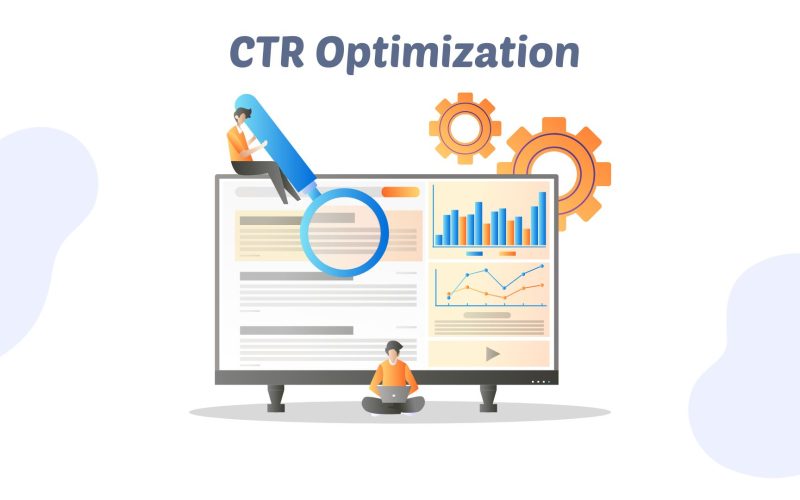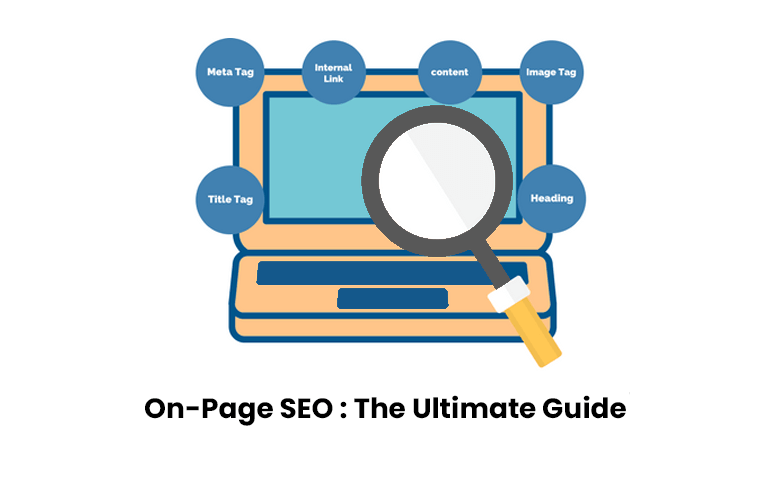In today’s highly competitive digital landscape, a guide for On-page SEO has become more crucial than ever for achieving online visibility and success. As we advance into 2024, search engines are continuously evolving, with algorithms becoming smarter and more focused on user experience and relevance.
This means that understanding how to make your content not only visible but also engaging and valuable to both search engines and users is essential for maintaining and growing your online presence.
In this comprehensive guide for on-page SEO, we’ll explore every aspect of On-page SEO—from foundational concepts to advanced strategies—to ensure that you have a robust, effective, and up-to-date approach that aligns with current guide for on-page SEO best practices and keeps you ahead in the search rankings.
Table of Contents
- On-Page SEO Basics
- Optimize Title and Description Tags
- Craft Captivating and Valuable SEO Content
- Optimize Your Content for SEO
- Optimize for CTR
- On-Page UX Signals
- Advanced On-Page SEO Tips
- Conclusion
Chapter 1: On-Page SEO Basics

Welcome to the foundation of your on-page SEO journey!
On-page SEO is the practice of optimizing individual web pages, ensuring they rank higher in search engines and attract more targeted, relevant traffic to your site.
This chapter will explore the importance of on-page SEO and why it remains a critical factor for digital success in 2024. With search engines constantly evolving, mastering on-page SEO is the key to staying competitive, improving user experience, and driving sustainable organic growth.
Why is On-Page SEO Important?
Optimizing your On-page elements is essential not only for improving search rankings but also for enhancing the user experience, which plays a significant role in how both users and search engines perceive your content.
Search engines today prioritize multiple on-page factors, all of which contribute to better visibility and engagement on your site.
- User Experience: Your content should be informative, valuable, and easy to navigate. A well-structured page keeps users interested and encourages them to explore further, leading to longer engagement times.
. - Bounce Rate and Dwell Time: High engagement signals to search engines that your content meets users’ needs. The more time users spend on your page without bouncing, the more likely search engines are to view it as relevant and high quality.
. - Search Intent: Addressing the intent behind user queries can significantly improve your rankings. By aligning your content with what users are truly searching for, you increase the chances of satisfying their needs and boosting your visibility.
. - Page Loading Speed: Slow-loading pages often lead to higher bounce rates and poor user experience. Optimizing loading times can reduce abandonment rates and improve rankings.
. - Click-Through Rate (CTR): A compelling title and meta description can increase your organic CTR by enticing users to click. Higher CTRs can signal to search engines that your content is valuable and relevant.
. - Mobile and Desktop Optimization: With Google’s mobile-first indexing, ensuring a seamless experience across mobile and desktop is crucial. Mobile optimization helps retain users who access content on smaller screens, enhancing both usability and search performance.
.
On-Page SEO Checker can help you analyze your content and provide actionable insights you can implement in minutes.

Basic On-Page SEO Checklist
To get you started, here’s a quick checklist that covers all essential aspects of on-page SEO optimization:
- Keyword Research and Placement: Start by identifying relevant keywords that align with your content. Use primary and secondary keywords naturally throughout your page to target search intent effectively.
. - SEO-Friendly URL Structure: Keep your URLs short, descriptive, and include keywords where possible. This improves clarity for both search engines and users.
. - Optimized Title and Meta Description: Create compelling, keyword-rich titles and meta descriptions to boost CTR. Titles should be under 60 characters, while descriptions should remain under 160 characters to avoid truncation.
. - Quality Content with Valuable Information: Prioritize creating original, informative content that meets user intent and provides real value. This will not only help with ranking but also with user engagement.
. - Image Optimization with ALT Tags: Use descriptive ALT text for all images, including relevant keywords. This improves accessibility and helps search engines understand the content.
. - Internal and External Linking: Link to other relevant pages on your website to keep users engaged, and include credible external links to add authority and context to your content.
. - Fast Loading Speed: Optimize images, leverage browser caching, and reduce server response times to ensure your page loads quickly, enhancing user experience and retention. You can use Google’s PageSpeed to check for your site’s speed
. - Mobile Responsiveness: Ensure your page layout adapts smoothly to mobile devices. With mobile-first indexing, a seamless mobile experience is crucial for search rankings.
.
Chapter 2: Optimize Title and Description Tags
Title tags and meta descriptions are your first opportunity to make an impression on both search engines and potential visitors. As Google continues to refine its algorithms, it emphasizes the importance of title tags, which it claims “help a lot” with ranking factors.
This makes title and meta description optimization a priority. Well-crafted tags not only improve your SEO but also increase the likelihood of enticing users to click through to your page. Below can be referred as an example of well crafted Title and Tags

Tips for Optimizing Title Tags
- Incorporate Keywords: Include your main keyword naturally within the title. This signals relevance to search engines and makes it clear to users what the content is about.
. - Length Matters: Keep titles under 60 characters to avoid truncation in search results. Short, punchy titles are easier to read and tend to perform better.
. - Add a Unique Angle: Make your title stand out by including a number (like “Top 5” or “10 Ways”) or posing a question. These strategies make your title more clickable and appealing by promising specific, actionable insights or sparking curiosity.
.
Tips for Writing Meta Descriptions
While meta descriptions don’t directly impact search engine rankings, they play a crucial role in influencing your click-through rate (CTR). A well-crafted meta description can entice users to click on your link over others, making it an essential element in optimizing for user engagement.
- Summarize the Content: Provide a concise summary of what the page offers, giving users a clear idea of the content they can expect. Make it relevant, precise, and engaging to draw in your target audience.
. - Use a Call-to-Action (CTA): Including an actionable phrase in your meta description can encourage users to take the next step. Phrases like “Learn more,” “Explore now,” or “Find out how” can create a sense of urgency and make your result more appealing.
. - Include Keywords: Use relevant keywords strategically within your description. When users search for those terms, these keywords will appear bolded in the results, helping your content stand out and signaling to users that your page matches their search intent. This small enhancement can make a big difference in attracting organic clicks.
.
Chapter 3: Craft Captivating and Valuable SEO Content

Creating valuable, engaging content is essential in 2024 as search engines like Google prioritize quality, relevance, and user intent over outdated techniques like keyword-stuffing.
This shift means that to truly stand out, your content needs to go beyond just matching keywords with user queries—it must deliver genuine value, address specific needs, and provide a compelling reason for users to stay on your page.
Crafting Content That Deserves to Rank #1
Here’s how to create content that not only ranks well but also serves your audience effectively:
- Unique Content: Strive to create original content that brings a fresh perspective or valuable information users won’t easily find elsewhere.
Avoid duplicating content from other sources and instead focus on adding unique insights, case studies, or actionable steps that can genuinely help readers achieve their goals.
. - High Value: Think deeply about the problems your target audience faces, and provide thorough, in-depth answers to address these issues.
High-value content often includes actionable tips, expert insights, and resources that support your points with data and credible sources. Using reliable data not only builds trust but also reinforces your authority on the subject.
. - Search Intent Optimization: Understanding search intent is crucial. Every query has an intent behind it, such as informational (seeking knowledge), navigational (seeking a specific site or resource), or transactional (intending to make a purchase or take action).
Tailoring your content to match the intent behind target keywords ensures that users find exactly what they’re looking for, which increases engagement and lowers bounce rates.
.
Examples of Content that Works
To create high-ranking content, consider these popular formats that effectively engage users and match their search intent:
- Guides and How-Tos: These long-form pieces provide comprehensive information, making them ideal for users seeking in-depth knowledge on a topic.
Detailed guides align well with informational search intent and are highly shareable, increasing your content’s reach and potential backlinks.
. - Listicles: Content presented in list format (like “Top 10 Tips”) is easy to digest and appeals to readers looking for quick insights or ideas.
Listicles are especially effective for mobile users, as they allow readers to quickly scroll through key points.
. - Case Studies: Showing real results and data builds credibility, particularly for audiences looking for proof that a strategy or product works.
Case studies that document real-world applications and results resonate with users who value evidence and tangible examples over theoretical discussions.
.
Incorporating these content types into your strategy can keep users engaged, encourage longer dwell times, and foster trust—all essential for a successful SEO strategy in 2024.
Chapter 4: Optimize Your Content for SEO
Once you have crafted engaging content, the next step is to optimize it strategically. This involves structuring your content in a way that makes it easy for search engines to understand, and valuable to readers.
By using keywords effectively, organizing your content clearly, and incorporating multimedia elements, you signal to search engines that your page is a credible and authoritative resource on the topic.
These optimizations not only help improve search visibility but also create a better experience for users who interact with your content.

Effective Keyword Placement
Using Keywords strategically throughout your content is essential, but keyword stuffing—repeating keywords unnaturally—can hurt your rankings. Here are some effective ways to integrate keywords:
- In the First 100 Words: Start by placing your main keyword within the first 100 words of the article. This early usage signals relevance to search engines and reinforces to readers that they’re in the right place.
. - Headers (H1, H2, H3): Incorporating keywords in headers helps structure the content for readers while providing clear topic indicators for search engines. Aim to place your main keyword in the H1 and variations in H2 and H3 headers as appropriate.
. - Throughout the Content: Use keywords naturally in body paragraphs, but focus on readability and flow. A well-integrated keyword strategy will enhance content relevance without making it sound forced.
. - In ALT Text: When you use images, include keywords in the ALT text to further enhance relevance and improve accessibility.
.
Structuring Content for SEO
Organizing your content in a way that’s intuitive and easy to scan benefits both users and search engines:
- H1 Tag for Title: Your main title should always be in an H1 tag, as it tells search engines and users what the content is primarily about. It’s often the most prominent text on the page and sets expectations for the rest of the content.
. - Logical Flow: Structure your content with a logical, hierarchical flow. Use H2 and H3 tags to create sections and subsections, and ensure each section leads naturally to the next.
This not only improves readability but also signals to search engines the relationships between different parts of your content.
. - Internal Links: Adding links to relevant content on your site keeps users engaged and lowers your bounce rate. It also distributes page authority and can help search engines better understand the structure of your site.
A solid internal linking strategy makes it easier for search engines to crawl and index related pages, while also providing additional value to readers.
.
Visual Elements
Incorporating images, videos, and infographics not only makes your content visually appealing but also provides additional SEO opportunities. Visual elements, when optimized, enhance engagement and can even help your content rank in image or video search results.
- Using Descriptive ALT Text: ALT text is a description you can add to each image, helping search engines understand its content.
Including keywords in your ALT text where relevant reinforces the topic of the page and allows search engines to index your images correctly. Descriptive ALT text also improves accessibility for visually impaired users, making your content more inclusive.
. - Compressing Images: Large images can slow down your page, leading to higher bounce rates. Compressing images reduces loading times without compromising quality, which is essential for user experience and SEO.
Many tools can help you compress images efficiently, ensuring that they load quickly on both desktop and mobile devices.
. - Adding Captions and Descriptions: Whenever possible, include captions for images and descriptions for videos. Captions provide context to users and reinforce keywords naturally, while video descriptions help search engines better understand your content.
.
By implementing these strategies, your content will be more effective, accessible, and appealing—enhancing its chances of ranking well and resonating with users.
Chapter 5: Optimize for CTR
Your organic click-through rate (CTR) is an essential metric in SEO, as it influences both your search engine rankings and the amount of traffic driven to your website.
A high CTR signals to search engines that your content is relevant and engaging for users, which can, in turn, boost your rankings and lead to even more clicks.
Optimizing your CTR is a direct way to attract more visitors to your site, which is crucial for increasing visibility, engagement, and ultimately, conversions. Here are some practical, effective ways to improve your CTR.

Practical Ways to Improve CTR
Craft a Catchy Title: Your title is one of the most important elements for attracting clicks. Including numbers, questions, or power words such as “ultimate,” “best,” or “essential” can make a title more intriguing and clickable.
Numbers, in particular, help set expectations for readers and indicate that the content is well-structured and easy to follow. For example, “10 Best Tips for SEO Success” may get more clicks than “Tips for SEO Success” because it promises a clear, organized list.
Additionally, addressing a common problem or posing a question can grab attention and increase the likelihood of clicks.
Use Rich Snippets: Rich snippets are a type of structured data that can display additional information directly in the search engine results, making your listing more appealing and informative.
Examples of rich snippets include star ratings from product reviews, FAQ sections, or breadcrumb navigation paths. By adding structured data like reviews or FAQs, you can make your result stand out in the search results.
Rich snippets not only provide useful information at a glance but also improve the visual appeal of your listing, helping it attract more attention and clicks.
Implement a Descriptive URL: The URL displayed under your title can have a significant impact on CTR. Users are more likely to click on a link if the URL appears clean, relevant, and matches their search intent.
A descriptive, keyword-rich URL can help reassure users that your page is likely to offer the content they’re looking for. Rather than a generic, complex URL structure, aim for something readable and relevant.
For instance, “yoursite.com/seo-tips” is clearer and more attractive than “yoursite.com/12345/abc.” This small detail can help users feel confident that they are making the right click.
Chapter 6: On-Page UX Signals
Google analyzes user interaction signals, referred to as “UX signals,” to gauge how effectively a piece of content meets users’ needs and expectations.
These signals allow Google to determine which pages are most relevant and valuable for users based on real-world interaction data.
In this chapter, we’ll explore key UX signals, such as dwell time and bounce rate, and provide tips on how to optimize your website’s content to improve these metrics.
Key UX Signals
Dwell Time: Dwell time measures the duration a user spends on a page before returning to the search results.
The longer users stay engaged on your page, the stronger the indication that your content is meeting their needs and providing value. A high dwell time suggests that the content is both relevant and engaging.
Bounce Rate: Bounce rate is the percentage of visitors who leave your site after viewing only one page. A high bounce rate can signal that users didn’t find what they were looking for or that the page didn’t fulfill their expectations.
Reducing bounce rate is crucial for retaining users and improving UX signals.
Strategies to Enhance UX Signals
Clear Formatting: Structure your content in a way that’s easy to read and digest. Breaking up large blocks of text, using bullet points, subheadings, and including visuals, such as images or charts, can make your content more accessible.
Clear formatting allows users to quickly scan the page, locate relevant information, and stay engaged.
Add Engaging Elements: Incorporate multimedia, such as videos, infographics, or interactive elements. These additions can capture users’ interest, making the experience more dynamic and enjoyable.
Engaging elements encourage users to spend more time on your page, which boosts dwell time.
Internal Links: Guide users to other relevant content on your site by embedding internal links throughout your content. Internal links keep users on your website longer by encouraging them to explore additional topics.
This practice enhances both dwell time and user engagement, which are beneficial for UX signals.
By focusing on these strategies, you can improve the user experience and help your content rank higher in search results.
Chapter 7: Advanced On-Page SEO Tips
After implementing the basics, these advanced techniques can elevate your on-page SEO strategy by enhancing visibility, relevancy, and user engagement.
Advanced Tips
Latent Semantic Indexing (LSI) Keywords: Incorporate related terms and phrases in your content to help search engines better understand its context and relevance. LSI keywords are words and phrases commonly found together within a particular topic.
For example, if you’re writing about “healthy recipes,” including terms like “nutrient-rich,” “balanced diet,” and “meal prep” can provide context, helping search engines recognize the content as comprehensive.
This can improve your rankings by capturing a broader range of search queries while keeping content natural.
Schema Markup: Adding structured data to your website can make your content eligible for rich snippets, which are enhanced search results that show additional information, such as ratings, images, and prices.
By implementing schema markup for product pages, FAQs, or reviews, you can help search engines display more detailed information directly in search results.
For instance, a recipe page with schema markup may show cooking time, ingredients, and ratings, making it more attractive to users and potentially increasing click-through rates.
Optimize for Voice Search: Voice search is becoming increasingly popular with the growth of virtual assistants like Siri, Alexa, and Google Assistant.
To optimize for this, write in a natural, conversational tone, and consider using long-tail keywords that match how people speak. For example, instead of “best pizza recipes,” consider “What are the best pizza recipes for beginners?”
This approach aligns with the way people phrase queries when speaking aloud, improving the chances of your content appearing in voice search results and answering users’ questions more effectively.
Conclusion
Mastering on-page SEO in 2024 requires a comprehensive approach that combines technical know-how, user experience insights, and content expertise.
On-page SEO is not just about getting search engines to notice your content; it’s about creating a seamless experience that is both valuable and engaging for your readers.
By focusing on the right elements—such as keyword optimization, internal linking, and multimedia enhancements—you can ensure your content is optimized for both search engines and users.
For example, placing relevant keywords naturally throughout your content helps search engines understand the topic while keeping readability high for users.
Similarly, internal links guide visitors to related content on your site, keeping them engaged longer and improving SEO performance. Enhancing content with images, videos, and infographics can also boost engagement by making information more digestible and visually appealing.
By following this guide, you can create content that ranks well on search engines and delivers genuine value to your audience, ultimately improving your website’s visibility, credibility, and user satisfaction.






